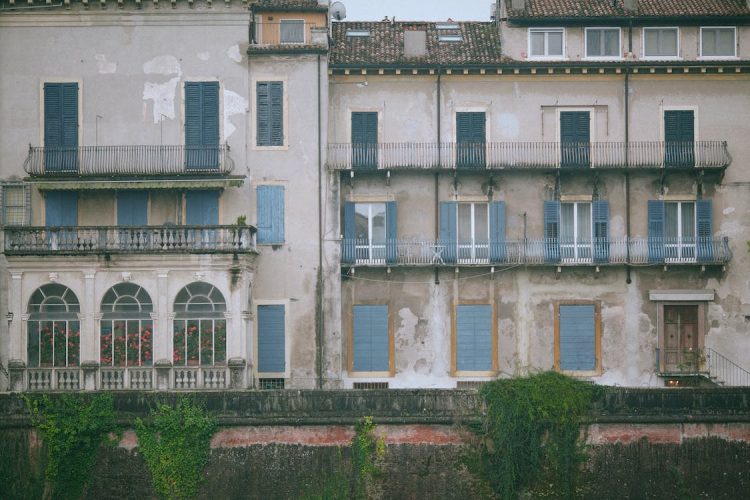
NYC Facade Restoration: The Ultimate Guide | Preserving Heritage, Building Tomorrow
Welcome to the definitive guide on NYC facade restoration, “Preserving Heritage, Building Tomorrow.” This thorough guide will teach you about the science and art of restoring facades in New York City, a city famous for its famous architectural structures. This guide will provide you with useful information and helpful hints to make sure that we protect our rich history while creating a better future, regardless of whether you are an architect, property owner, or history buff.
New York City’s architectural scene is a tribute to its rich past, with its soaring skyscrapers and quaint brownstones. Unfortunately, these buildings have suffered from weathering and time, necessitating careful restoration to preserve both their aesthetic appeal and structural soundness. We will cover everything in this guide, from historical research and material selection to the nuances of cleaning and restoration techniques for facades.
Join us as we explore the intriguing field of facade restoration, unearth untold tales, resurrect lost methods, and honor the enduring beauty of New York City’s architectural marvels.
The Importance of Facade Restoration in Preserving NYC’s Heritage
The facades of New York City are more than just walls; they are dynamic historical artifacts. To preserve the city’s distinct identity and cultural legacy, these facades must be preserved. In addition to improving a building’s aesthetic appeal, facade restoration adds to a neighborhood’s overall charm and character.
By restoring facades, we can both respect historical craftsmanship and make necessary adjustments for contemporary living. We guarantee that upcoming generations will be able to appreciate the magnificence and historical significance of New York City by protecting these architectural gems. Facade restoration is more than just a cosmetic overhaul; it is a labor of love that requires careful planning, expertise, and respect for the architectural legacy of the city.
Understanding the History and Architectural Significance of NYC Facades
Understanding the building’s architectural significance and history is crucial before starting any facade restoration work. Every facade tells a different story that reflects the cultural influences and design fads of its era. By delving into the historical context, we gain a deeper appreciation for the building and can make informed decisions during the restoration process.
Architectural styles in New York City vary from Beaux-Arts to Art Deco, from Gothic Revival to Modernist. Each style has its distinct features and materials that need to be taken into account when repairing facades. Historical research enables us to find original architectural details that may have been obscured or harmed over time, such as elaborate moldings, beautiful cornices, and intricate masonry work.
Finding a balance between fixing structural problems and maintaining the original design intent is crucial when restoring facades. By studying the architectural history of a building, we can better understand its evolution and ensure that the restoration work respects its unique identity.
Common Issues and Challenges in Facade Preservation
Water conservation is not without its challenges. Time, weather, pollution, and neglect can all take a toll on the exterior of buildings, leading to various issues that need to be addressed during restoration. Some common issues include:
- Masonry Degradation: Over time, masonry can deteriorate due to factors such as moisture infiltration, freeze-thaw cycles, and exposure to pollutants. Cracked or spalled bricks, crumbling mortar joints, and efflorescence are signs of masonry degradation that require attention.
- Paint Intrusion: Water infiltration can cause significant damage to facades, leading to rot, mold growth, and structural instability. Identifying and addressing the source of water intrusion is crucial to preventing further deterioration.
- Paint Failure: Peeling, flaking, or blistering paint is not only unsightly but also an indication of underlying issues, such as moisture problems or incompatible paint systems. Proper paint removal and application techniques are essential for a successful facade restoration.
- Metal Corrosion: Metal elements, such as window frames, railings, and decorative features, are susceptible to corrosion. Rusting can compromise both the aesthetic and structural integrity of a facade. Restoring metal elements often involves cleaning, treating, and applying protective coatings.
- StructuralStructuralStructural Instability: Age, settlement, and inadequate maintenance can lead to structural issues that impact the stability of a facade. Restoring structural stability may involve reinforcing masonry, repairing or replacing damaged elements, and addressing foundation problems.
Addressing these common issues requires a thorough assessment or facade inspection and a comprehensive restoration plan. It is essential to work with experienced professionals who can identify and address these challenges effectively.
The Process of Facade Restoration: Assessment, Planning, and Execution
Facade restoration is a multi-step process that involves careful assessment, planning, and execution. It requires a collaborative effort between architects, engineers, preservationists, and skilled craftsmen. Here is a breakdown of the typical facade restoration process:
- Assessment: The first step in facade restoration is a comprehensive assessment of the building’s exterior. This includes a visual inspection, material testing, and structural analysis. The assessment helps identify existing issues, determine the scope of work, and develop a restoration plan.
- Planning:Planning: Based on the assessment, a detailed restoration plan is developed. This includes prioritizing repairs, selecting appropriate materials and techniques, and estimating the cost and timeline of the project. The planning phase also involves obtaining the necessary permits and approvals.
- Execution: Once the planning is complete, the restoration work can begin. This may involve tasks such as cleaning and masonry repair, repointing, paint removal, ornamental metalwork restoration, and waterproofing. Skilled craftsmen and specialized contractors are often employed to carry out the restoration work.
Throughout the restoration process, it is crucial to monitor the progress, make necessary adjustments, and ensure that the work is carried out in adherence to industry standards and preservation guidelines. Regular inspections and quality control measures help maintain the integrity and longevity of the restored facade.
Choosing the Right Materials and Techniques for Facade Restoration
Choosing the right materials and techniques is crucial for a successful facade restoration project. It is important to find a balance between historical authenticity and modern performance standards. Here are some considerations when selecting materials and techniques:
- Matching Existing Materials: When restoring facades, it is essential to use materials that closely match the original ones in terms of color, texture, and composition. This ensures a seamless integration of new and existing elements.
- Sustainable and Durable Materials: In addition to historical accuracy, it is important to consider the durability and sustainability of materials. Using environmentally friendly materials and techniques can help reduce the long-term maintenance needs and environmental impact of the facade.
- Testing and mock-ups: Before proceeding with the restoration, it is advisable to conduct material testing and mock-ups to evaluate their compatibility and performance. This helps identify any issues or concerns before the actual restoration work begins.
- Modern Technologies: Advancements in technology have introduced new materials and techniques that can enhance the performance and longevity of restored facades. These include protective coatings, sealants, and advanced cleaning methods.
By carefully selecting materials and techniques, we can ensure that the restored facade not only looks visually appealing but also stands the test of time.
Hiring a Professional Facade Restoration Contractor
Facade restoration is a specialized field that requires the expertise of professionals with experience in historic preservation, architecture, and construction. Hiring the right contractor is crucial for the success of your restoration project. Here are some factors to consider when selecting a facade restoration contractor:
- Experience and Expertise: Look for contractors who have a proven track record in facade restoration, particularly in historic buildings. They should have experience working with different architectural styles and materials.
- References and Portfolio: Ask for references and examples of past projects. A reputable contractor will be happy to provide you with a portfolio of their work and connect you with previous clients.
- Collaborative Approach: Facade restoration often involves collaboration between various professionals. Ensure that the contractor can work effectively with architects, engineers, and preservationists to achieve the desired outcome.
- Licensing and Insurance: Verify that the contractor holds the necessary licenses and insurance coverage. This protects you from liability and ensures that the work is carried out by qualified professionals.
- Cost and Timeline: Obtain detailed cost estimates and project timelines from potential contractors. Compare the proposals and consider the value provided rather than simply choosing the lowest bidder.
Remember, facade restoration is an investment in the long-term health and value of your property. Hiring a professional contractor who understands the complexities of restoration ensures that the work is carried out to the highest standards.
Permitting and Regulatory Requirements for Facade Restoration in NYC
Before undertaking a facade restoration project in New York City, it is important to understand the permitting and regulatory requirements. The city has specific guidelines and regulations in place to safeguard the architectural heritage and ensure the safety of restoration work. Here are some key points to consider:
- Landmarks Preservation Commission (LPC): New York City has a Landmarks Preservation Commission that oversees the preservation of designated landmarks and historic districts. If your building falls within a designated area, you may need to obtain approval from the LPC for facade restoration work.
- Certificate of No Effect (CNE): In some cases, minor facade restoration work may not require a full LPC review. Instead, a Certificate of No Effect (CNE) may be obtained, stating that the proposed work will have no adverse impact on the architectural character of the building.
- Special Inspection Agency (SIA): Facade restoration projects often require specialized inspections to ensure compliance with safety standards. Hiring a Special Inspection Agency approved by the Department of Buildings is necessary to meet these requirements.
- Local Building Codes: Familiarize yourself with the local building codes and regulations that govern facade restoration work. Compliance with these codes is essential for obtaining the necessary permits and ensuring the safety of the restoration project.
Navigating the permitting and regulatory landscape can be complex, but it is essential to ensure that your restoration project is in compliance with the law and meets the highest standards of preservation.
Case Studies of Successful Facade Restoration Projects in NYC
To truly appreciate the impact of facade restoration services, let’s explore some case studies of successful projects in New York City. These examples showcase the transformative power of restoration, both in enhancing the aesthetic appeal of buildings and revitalizing communities.
- Rockefeller Plaza: Rockefeller Plaza, located in the heart of Manhattan, New York City, is a complex of 19 commercial buildings. One of the most famous features of Rockefeller Plaza is the Rockefeller Center, a renowned entertainment and shopping complex, the Rockefeller Plaza Building underwent a comprehensive facade restoration in recent years. The project involved cleaning the intricate terra cotta details, replacing damaged elements, and applying protective coatings. The restoration not only preserved the historic character of the building but also contributed to the revitalization of the surrounding area.
- Empire State Building: Another architectural gem, the Empire State Building, underwent a facade restoration project that involved repairing and repointing the masonry, restoring the ornate cast iron details, and cleaning the facade. The restoration work revived the building’s grandeur and contributed to the preservation of its unique triangular shape.
- Waldorf Astoria Hotel: The Waldorf Astoria is a luxury hotel brand known for its upscale accommodations and world-class service. The original Waldorf Astoria Hotel was established in New York City in 1893. The restoration work honored the building’s rich history and ensured its continued presence as a cultural landmark.
These case studies demonstrate how facade restoration can breathe new life into historic buildings, preserving their architectural legacy for future generations to appreciate.
Funding Options and Incentives for Facade Restoration
Nycer Design Facade restoration projects can be financially demanding, but there are various funding options and incentives available to assist property owners. Here are some avenues to explore:
- Historic Preservation Tax Credits: In New York State, property owners may be eligible for state and federal historic preservation tax credits. These credits provide financial incentives for the restoration of historic buildings, helping offset a portion of the project costs.
- Grants and Loans: Non-profit organizations, government agencies, and historic preservation trusts often offer grants and low-interest loans to support facade restoration projects. Research local programs and initiatives that can provide financial assistance.
- Community Development Block Grants (CDBG): The U.S. Department of Housing and Urban Development (HUD) provides Community Development Block Grants to support various community development initiatives. These grants can be used for facade restoration projects that contribute to community revitalization efforts.
- Private Funding and Partnerships: Explore partnerships with private organizations, foundations, and philanthropic individuals who may be interested in supporting facade restoration projects. Crowdfunding platforms can also be utilized to raise funds from the community.
By leveraging these funding options and incentives, property owners can make facade restoration more financially feasible and contribute to the preservation of New York City’s architectural heritage.
The Impact of Facade Restoration on Property Value and Community Revitalization
Facade restoration not only preserves the architectural heritage of New York City but also has a positive economic impact. Restored facades enhance the curb appeal of buildings, attracting potential buyers, tenants, and visitors. The revitalization of historic buildings often leads to increased property values and stimulates economic activity in the surrounding area.
Communities benefit from facade restoration through improved livability, increased tourism, and a sense of pride in their local history. Restored facades contribute to a vibrant streetscape and create a sense of place that fosters community identity.
Investing in facade restoration is not just about preserving the past; it is about building a better future. By revitalizing our architectural treasures, we ensure that the legacy of New York City’s rich history lives on, inspiring future generations and creating a lasting impact.
FAQ Section
Why is facade restoration crucial for New York City?
To preserve New York City’s rich architectural legacy, the city’s identity, and sustainable urban growth, facade restoration is essential.
How do I evaluate the facade of my building?
For a thorough evaluation, perform a detailed inspection, spot deterioration indicators, and make use of contemporary technology. Early detection is essential.
What regulations govern facade restoration in NYC?
The NYC Landmarks Preservation Commission (LPC) guidelines, along with local and national preservation regulations, play a crucial role in governing facade restoration projects.
How can I budget for a facade restoration project?
Develop a comprehensive plan, collaborate with experts to estimate costs, and explore funding opportunities and grants available for heritage preservation.
In conclusion, ‘Preserving Heritage, Building Tomorrow: The Ultimate NYC Facade Restoration Guide’ is a comprehensive resource for anyone interested in the restoration of New York City’s facades. From understanding the importance of facade preservation to navigating the restoration process, this guide provides valuable insights and practical tips. By embracing facade restoration, we can honor our city’s architectural heritage while building a brighter future for generations to come.






